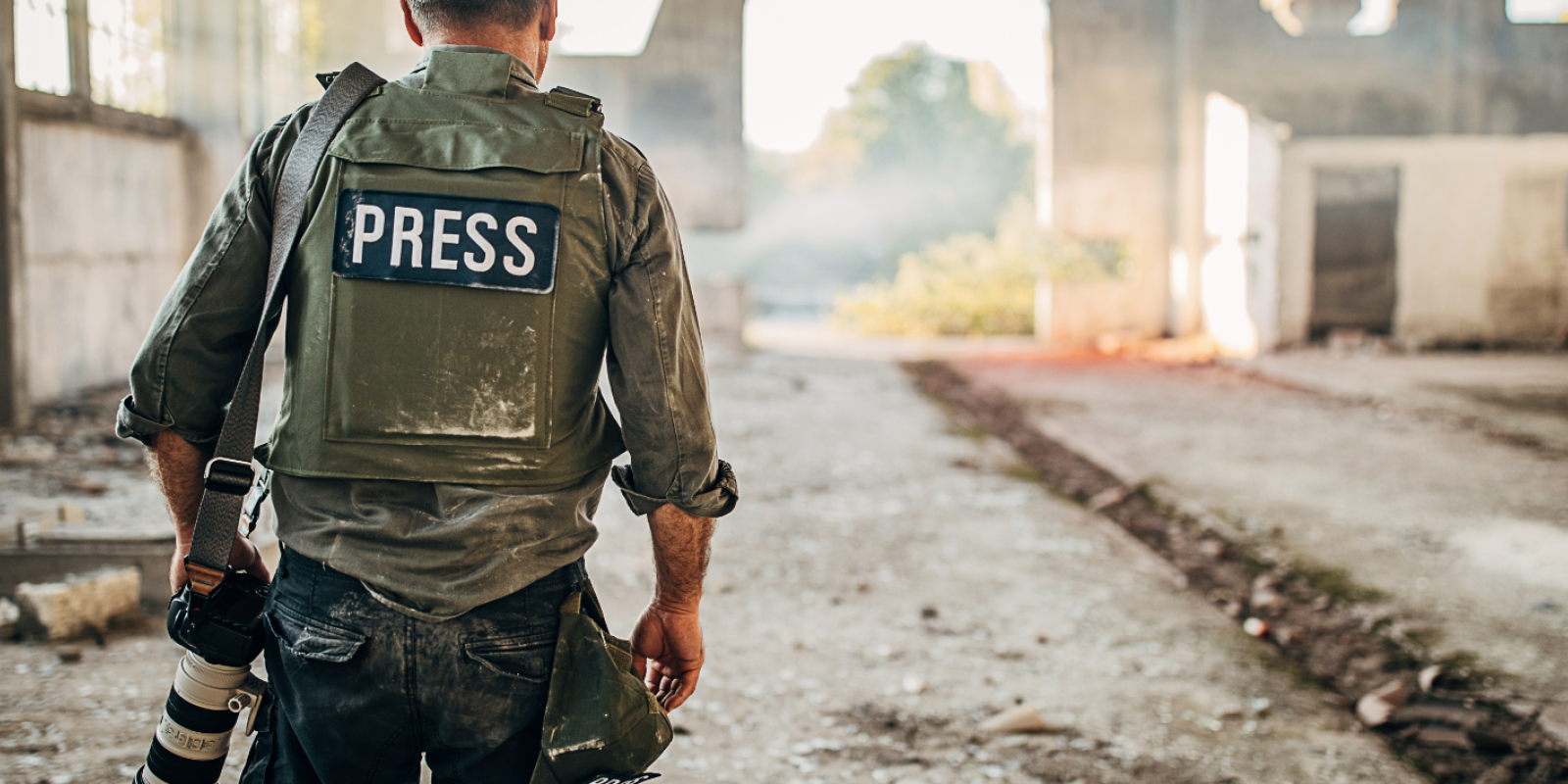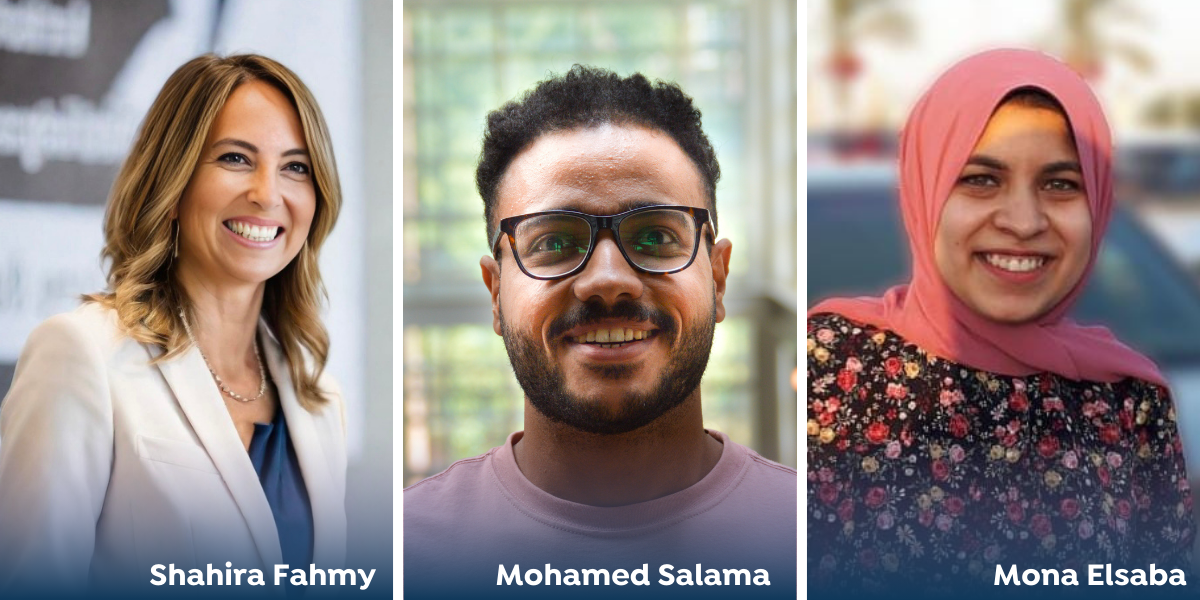
Reporting in Conflict Zones
Based on interviews with 18 Palestinian journalists in Gaza, AUC faculty and alumni published an award-winning research paper that highlighted the relationship between media and war, using Gaza as a case study.
“Shattered Lives, Unbroken Stories: Journalists’ Perspectives from the Frontlines of War” was co-authored by Shahira Fahmy ’91, ’00, professor in AUC’s Department of Journalism and Mass Communication and two of her former students, Mohamed Salama (MA ’22) and Mona Alsaba (MA ’23). Their research won a Top Faculty Paper Award (first place) at the Association for Education in Journalism and Mass Communication conference in Pennsylvania in August. The paper underscored the significance of safety, ethical reporting, the relationship between personal experiences and professional duties, and technology as both a facilitator and limiting factor in journalistic endeavors.
Highlighting why the researchers chose this topic in particular, Fahmy said, “Reporting from Gaza is severely restricted, with international journalists only permitted to enter when accompanied by the Israeli military.” Noting that over 130 media professionals were targeted and killed in less than a year — the deadliest of any conflict in more than three decades — Fahmy said, “We face a serious risk of a complete media blackout in the region. Therefore, it’s crucial to gain insight into the experiences of these journalists, particularly in the context of the ongoing war of narratives and the competing perspectives presented by Western media.”
“In the era of digital media platforms, journalists face unparalleled opportunities for real-time reporting and global engagement. However, our research shows that these advancements bring significant challenges that blur the lines between enabling and impeding journalistic pursuits.”
The researchers found that intertwined factors impact war reporting, including physical safety, emotional challenges, editorial independence, censorship in social media, the principle of neutrality and ethical considerations, among others.
In one example, journalist Haneen Harara is quoted in the paper, demonstrating the difficulty of maintaining professionalism in the face of extreme emotional impact. “There was a bombing just a few meters in front of me, with body parts flying and landing at my feet as I stood there. I was in shock; I couldn’t even grieve. There was no time to feel sad or shocked,” she said, “There were people we needed to report about in the news, live reports.”
This research has several implications for the future of conflict journalism. It suggests that journalists may become advocates rather than detached observers due to their lived experiences in conflict. The study also reveals how physical threats and logistical challenges limit journalists’ access to crucial information, resulting in significant gaps in coverage and potentially skewing public perception. Moreover, the rise of social media as a reporting tool complicates journalists’ ability to share accurate narratives due to algorithmic censorship and misinformation.
“In the era of digital media platforms, journalists face unparalleled opportunities for real-time reporting and global engagement. However, our research shows that these advancements bring significant challenges that blur the lines between enabling and impeding journalistic pursuits,” said Fahmy. As an example, Fahmy said that journalists are tasked with the critical responsibility of verifying content in the face of misinformation and adapting to physical and emotional threats.
The research draws attention to the urgent need for systemic support for journalists facing mental health strains and ethical dilemmas, underscoring the importance of adequate training and resources in a digital age marked by rapidly evolving media dynamics. “Overall, this study calls for the pressing necessity of re-evaluating journalistic practices and ethical standards in conflict reporting to create a more nuanced understanding of the challenges and responsibilities faced by journalists in war zones,” said Fahmy.

